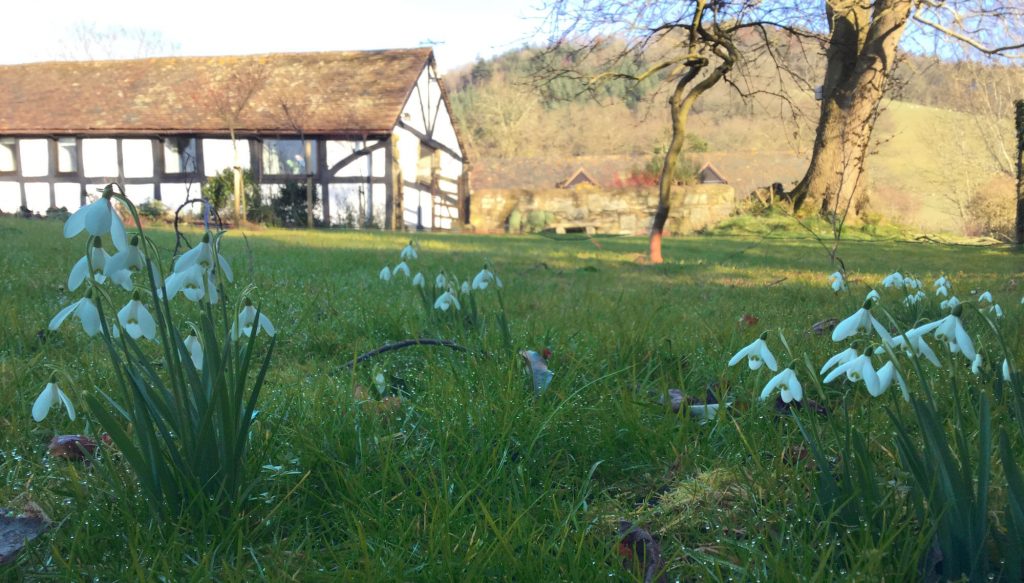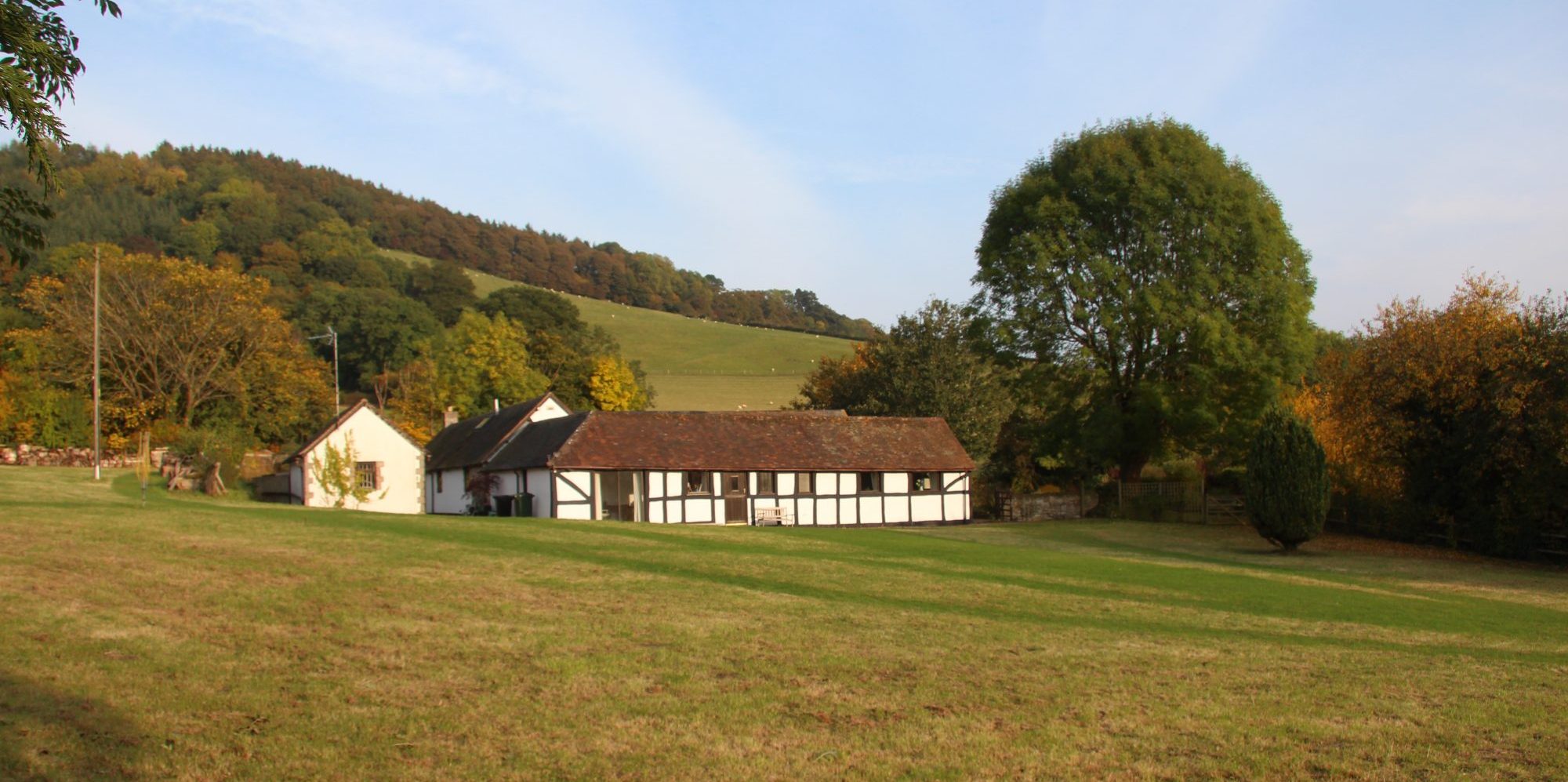Plants die back, shrubs close down and gardeners like me wander around looking at the skeleton of the garden but not doing much gardening – nor blogging. But not all the plants are asleep. Many berries brightened up the autumn and early winter days, gradually being devoured by birds – except for the small shiny scarlet berries of the red berberis in the sycamore border, obviously not as attractive to the birds as to me. Another favourite of mine are the three evergreen viburnum tinus shrubs; these I trimmed back in the summer and they have rewarded me with a mass of flowers, white tinged with pink all through the winter.
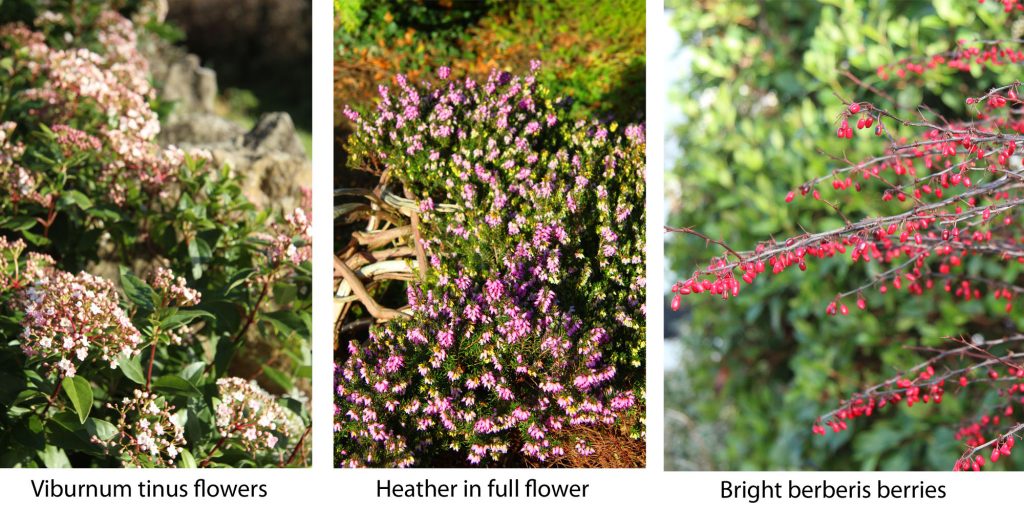
Similarly, the heathers in the central round bed of the courtyard have given a colourful display from early December, but for some reason I’m not a huge fan of them, they just seem a bit boring, but in this extraordinarily warm February the bees and even butterflies have awoken and they are feeding primarily on the heather, which has made me soften towards them.
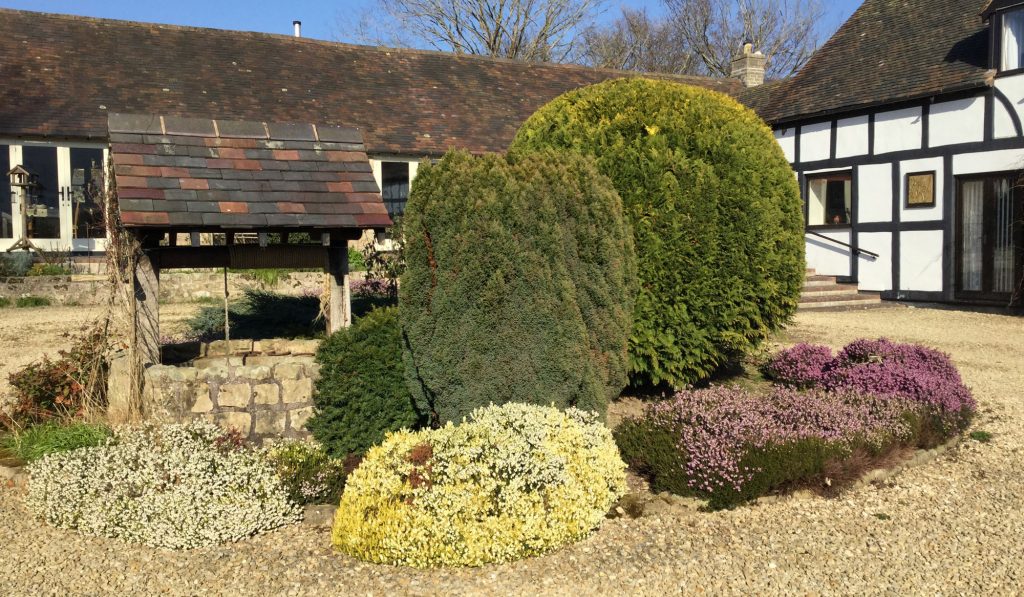
Whether it is due to the long hot summer or the mild winter (or perhaps both), the winter flowering deciduous shrubs have been impressive this year. The creamy coloured flowers of the large lonicera fragrantissima have been more abundant than last winter but the highlight has been viburnum bodnantense at the back of the shrub border, splashes of bright pink high up on the stiff upright woody stems makes the whole shrub stand out, with its sweet fragrance wafting across the smaller shrubs, reminding me to look in its direction to enjoy the sight.
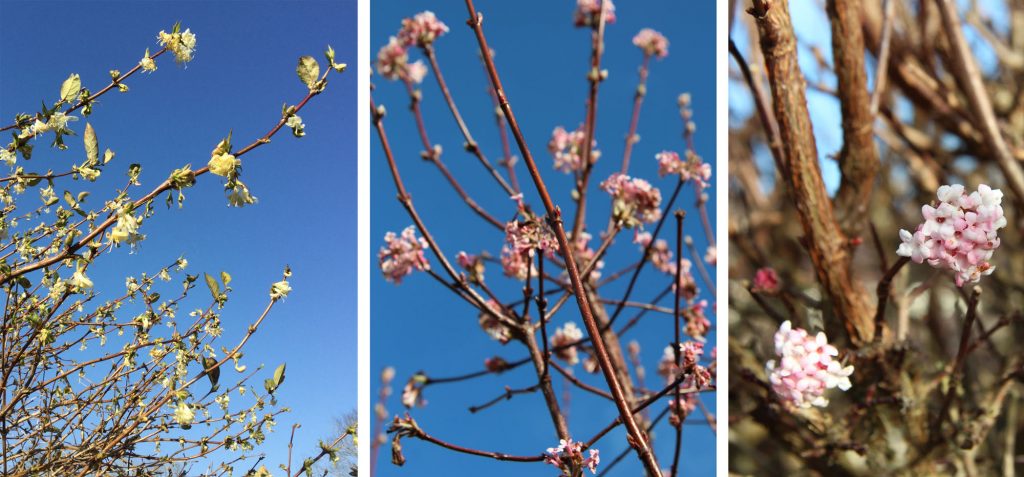
I had always wanted a witch hazel, being fascinated by its unusual spidery flowers. The variety I bought last year, hamamelis intemedia Jelena, has coppery orangeflowers with burgundy centres. Its stems have been covered with flowers for several weeks which catches the slanting winter sunlight in the morning and late afternoon. I’m pleased with the subtle but eye-catching display it creates in the secluded garden.
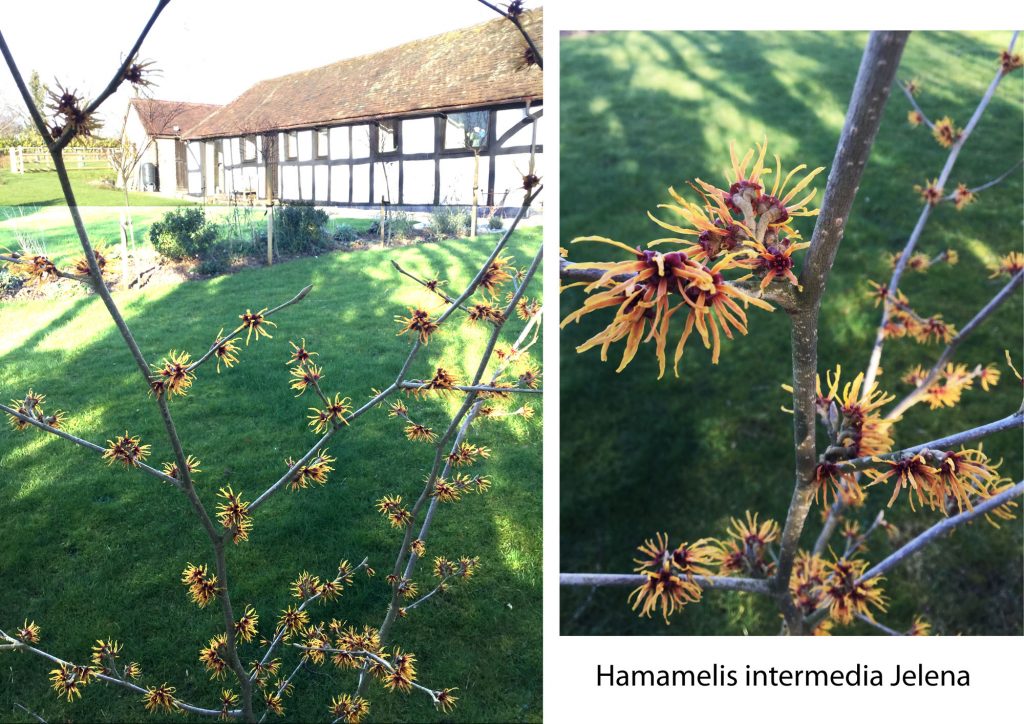
The hellebores under the giant ash tree have continued to multiply, they just self-seed everywhere and most of the new seedlings have good flowers, many pink, some quite dark, the others shades of cream from pure white to almost yellow. I adore plants that produce new attractive plants so freely. Yes they can become a problem when they spread into and around more delicate plants, but I’m happy to dig some up, though I always will put them elsewhere, I can’t compost them. This winter I selected some small hellebores with particularly good flowers- and growing where I could dig them out without destroying neighbouring plants – and replanted them in along the avenue and also in the wide border by the secluded garden to give both some winter colour. Beautiful plants.
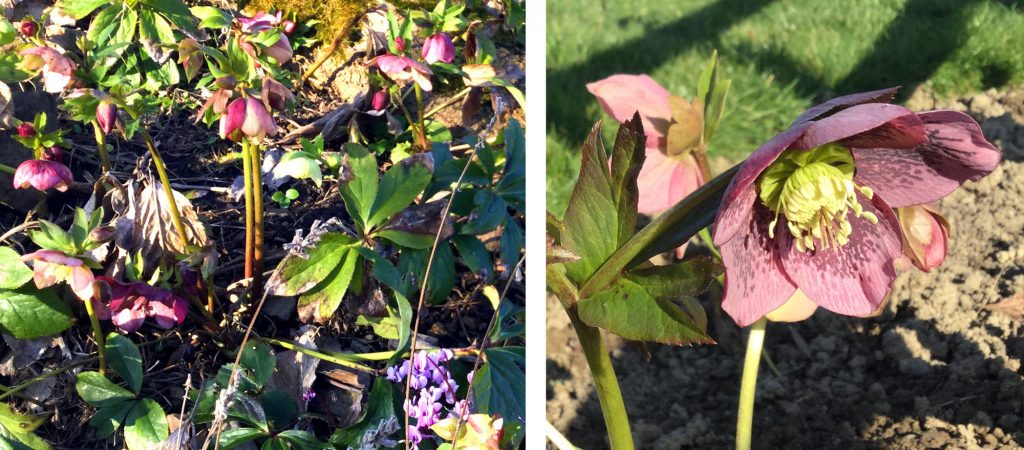
There are snowdrops all along the lanes around our Shropshire home and many clumps in the beds around the courtyard. Some are quite hidden behind large shrubs, so last March I dug up several clumps and replanted them in two small patches along the southern edge of the main garden, beneath the shade of the tall hedgerow trees.
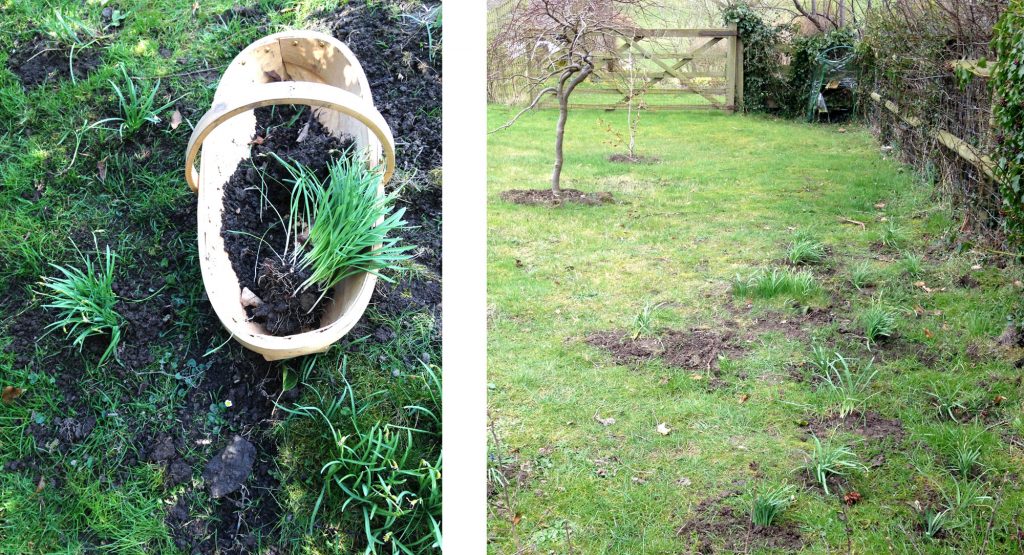
As the winter progressed, I often spent time peering at the grass for signs of their growth and had started to think they had gone, but finally their pale green leaves emerged above the grass and it seemed quite suddenly that there were two patches of snowdrops – hardly enough to be called a ‘drift’ but patches, nevertheless. This February I have replanted lots more snowdrops to extend my patches – one day they may become a drift. There have been many, many gloriously sunny – and warm – days this February, which has made it delightful to enjoy the early flowers and watch buds swell and start to burst. Like the bees and butterflies, I have gone from place to place to relish it all.
